
How to Configure Magento 2 Multivendor Marketplace Extension?
How can a Magento 2 multivendor marketplace grow your e-commerce business? It allows multiple vendors to sell products through one store. It offers flexibility and scalability, perfect for expanding businesses. This article helps you set up a Magento multivendor marketplace and manage vendors.
Key Takeaways
-
What is a Magento 2 Multi-Vendor Marketplace?
-
Key Features of Magento 2 Marketplace Multi Vendor Theme
-
Steps to Create a Multi-Vendor Marketplace Using Magento 2
-
How Magento 2 Marketplace Multiple Vendor Module Enhances Your Online Store
-
Top Magento 2 Multi-Vendor Marketplace Extensions
What is a Magento 2 Multi-Vendor Marketplace?

A Magento 2 Multi-Vendor Marketplace is an e-commerce platform. It allows multiple vendors to sell their products through a single online store.
Each vendor can manage their:
-
Own products
-
Orders
-
Shipments.
The marketplace owner oversees the entire platform. This setup allows businesses to offer a wide range of products without managing inventory themselves. Magento 2's flexibility makes it a popular choice for building scalable marketplaces. Vendors can customize their storefronts. Customers enjoy a seamless shopping experience with access to many products.
The marketplace model encourages competition among vendors. It often leads to better pricing and more product variety for customers. It also reduces operational costs for marketplace owners. Vendors handle their logistics and inventory. Magento 2 Multi-Vendor extensions provide tools for managing vendors and tracking sales.
Key Features of Magento 2 Multi-Vendor Marketplace Theme
| Feature | Explanation |
|---|---|
| Vendor Dashboard | Each vendor gets a dedicated dashboard. They can manage products, orders, and earnings from this dashboard. Vendors view sales data and track inventory. It offers easy access to order and shipping management. Dashboard insights help vendors improve performance. This feature allows vendors to operate independently within the marketplace. |
| SEO-Friendly URLs in Magento 2 Marketplace | The platform generates SEO-friendly URLs for products and vendor pages. These URLs improve marketplace visibility on search engines. Vendors customize: Meta tags Descriptions Keywords SEO optimization helps attract more organic traffic. This feature increases vendors' chances of being discovered online. |
| Supports Multiple Payment Gateways | Magento 2 supports multiple payment gateways. Customers can choose from various options like: Credit cards PayPal Stripe Vendors select their preferred payment methods. Secure transactions follow industry standards. This feature makes global transactions easier. |
| Responsive Design | The marketplace features a responsive design. It works smoothly on: Desktops Tablets Smartphones Users enjoy a consistent shopping experience on all devices. Vendors manage stores from any device. Mobile compatibility improves customer experience and increases sales. |
| Commission Management | Marketplace owners set commission rates for vendors. These rates may be fixed or percentage-based. Vendors receive detailed reports after commissions are deducted. Transparent commission structures build trust. This feature simplifies revenue management for marketplace owners. |
| Vendor Ratings and Reviews | Customers leave ratings and reviews for vendors. This feedback improves the marketplace reputation. Positive reviews encourage vendors to maintain quality. Good reviews boost vendor sales. Reviews help customers trust the marketplace. |
| Order and Shipping Management | Vendors manage orders directly from their dashboards. They update order statuses and process shipments. Vendors also track deliveries. Customers receive real-time updates on their orders. This feature reduces delivery errors and boosts satisfaction. |
| Multi-Language Support | The platform offers multi-language support. Vendors translate storefronts and product descriptions for global customers. This feature increases accessibility. Localization helps vendors reach different regions. Customers shop in their preferred language. |
| Analytics and Reporting | Vendors access analytics and reporting tools. They track sales performance and monitor customer behavior. Vendors use data to make better decisions. Data-driven strategies help vendors improve listings and marketing. This feature supports business growth. |
Steps to Create a Multi-Vendor Marketplace Using Magento 2
1. Set Up the Basic Magento 2 Store for Multi-Vendor Marketplace
Start by setting up your Magento 2 store. Install Magento 2 and configure the basic store settings. Make sure the store functions properly and is optimized for e-commerce. Ensure compatibility with the multi-vendor extensions you plan to use. This step lays the foundation for your marketplace.
2. Choose an Appropriate Magento 2 Multi-Vendor Marketplace Theme
Select a Magento 2 Multi-Vendor Marketplace theme that aligns with your brand and target audience. The theme should be responsive and customizable to suit your needs. Look for themes that support vendor management features. Make sure the theme is SEO-friendly to help your marketplace rank better on search engines.
3. Install Essential Magento 2 Multi-Vendor Marketplace Extensions
Install the necessary Magento 2 Multi-Vendor Marketplace extensions. These extensions enable vendor management, product listings, and commission setup. Make sure the extensions are compatible with your store version. Test the Magento extensions after installation to ensure they work smoothly with your theme.
4. Configure the Magento 2 Marketplace Extension Multi-Vendor Panel
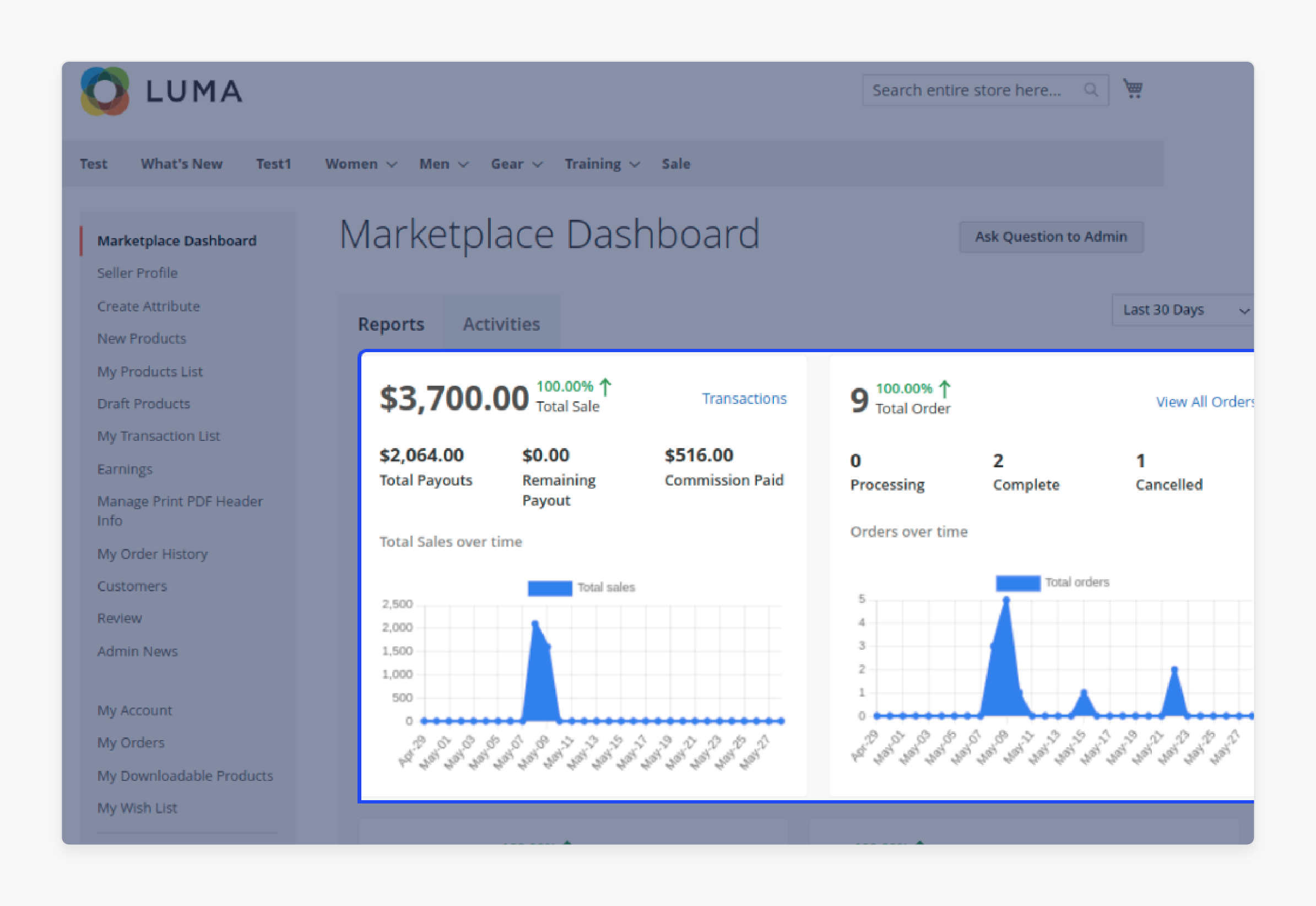
After installation, configure your multi-vendor marketplace settings. Set up vendor accounts, product categories, and commission structures. Configure vendor permissions to ensure they can manage their stores. This configuration helps streamline the marketplace operations. Different configurations you need to do are:
-
Vendor Registration: Enable vendor registration on your marketplace. Vendors should be able to sign up and create accounts easily. Ensure that the registration process is simple and automated. Approve new vendor registrations to maintain control over who joins your marketplace. This step helps grow your vendor base.
-
Vendor Dashboard: Each vendor should have access to a dedicated dashboard. This dashboard allows vendors to manage products, orders, and earnings. Vendor dashboards should offer clear insights and easy-to-use features. The dashboard empowers vendors to run their businesses within your marketplace.
-
Product Management: Vendors need to manage their products efficiently. Provide tools for product listing, editing, and categorization. Ensure vendors can track inventory and set pricing. This step ensures smooth product management within your marketplace.
-
Commission Setup: Set up your commission structure based on your business model. You can choose between fixed or percentage-based commissions. Configure automatic calculations to streamline payouts. This feature helps you generate revenue while managing vendor earnings.
-
Customer Service: Offer reliable customer service for both vendors and customers. Implement a support system where vendors can reach out for help. Provide customers with a way to resolve issues with their orders. Effective customer service enhances marketplace reputation and satisfaction.
How Does Magento 2 Marketplace Multiple Vendor Module Enhance Your Online Store?
1. Simplify Vendor Registration
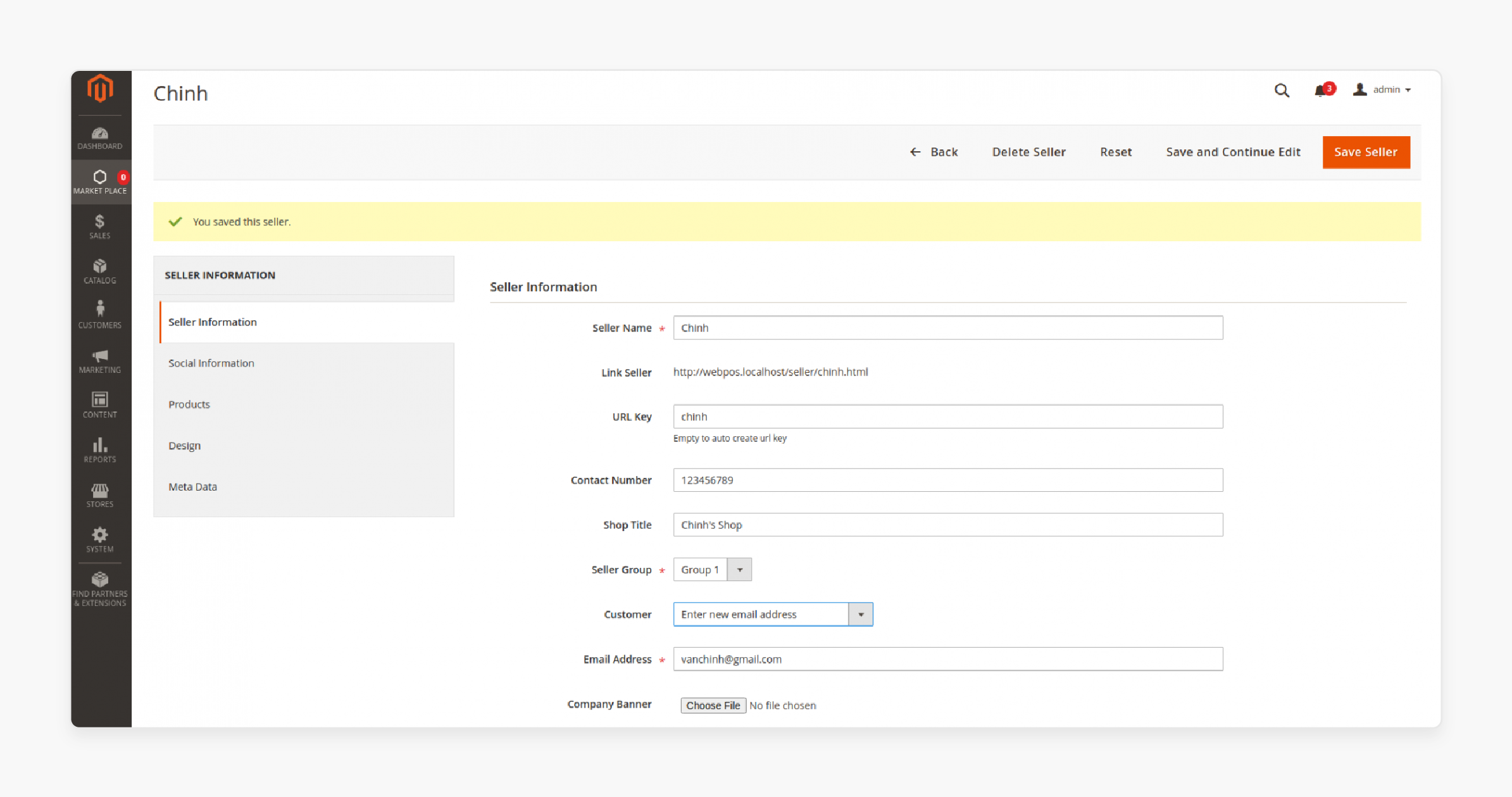
The Magento 2 Multi-Vendor Marketplace extension streamlines vendor registration. Vendors can easily sign up and create their profiles. You can approve or reject vendor applications quickly. Automated registration makes the process efficient. It helps you onboard new vendors faster.
2. Automate Order Management
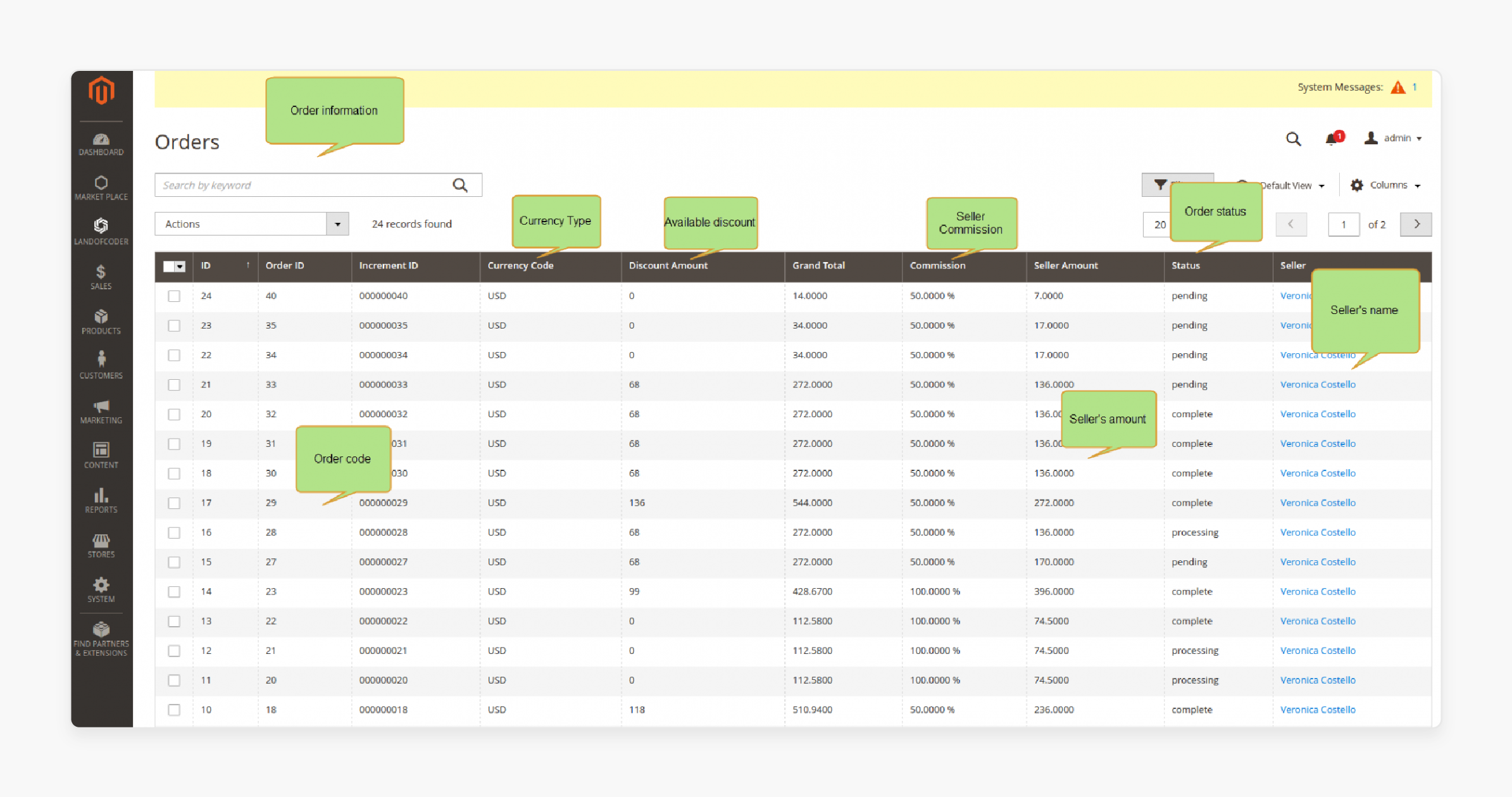
The extension helps automate order management for vendors. Vendors can process orders, track shipments, and update statuses easily. Automation reduces errors and speeds up fulfillment. It keeps customers satisfied with faster deliveries. It also allows vendors to focus on their businesses.
3. Customize Vendor Storefronts
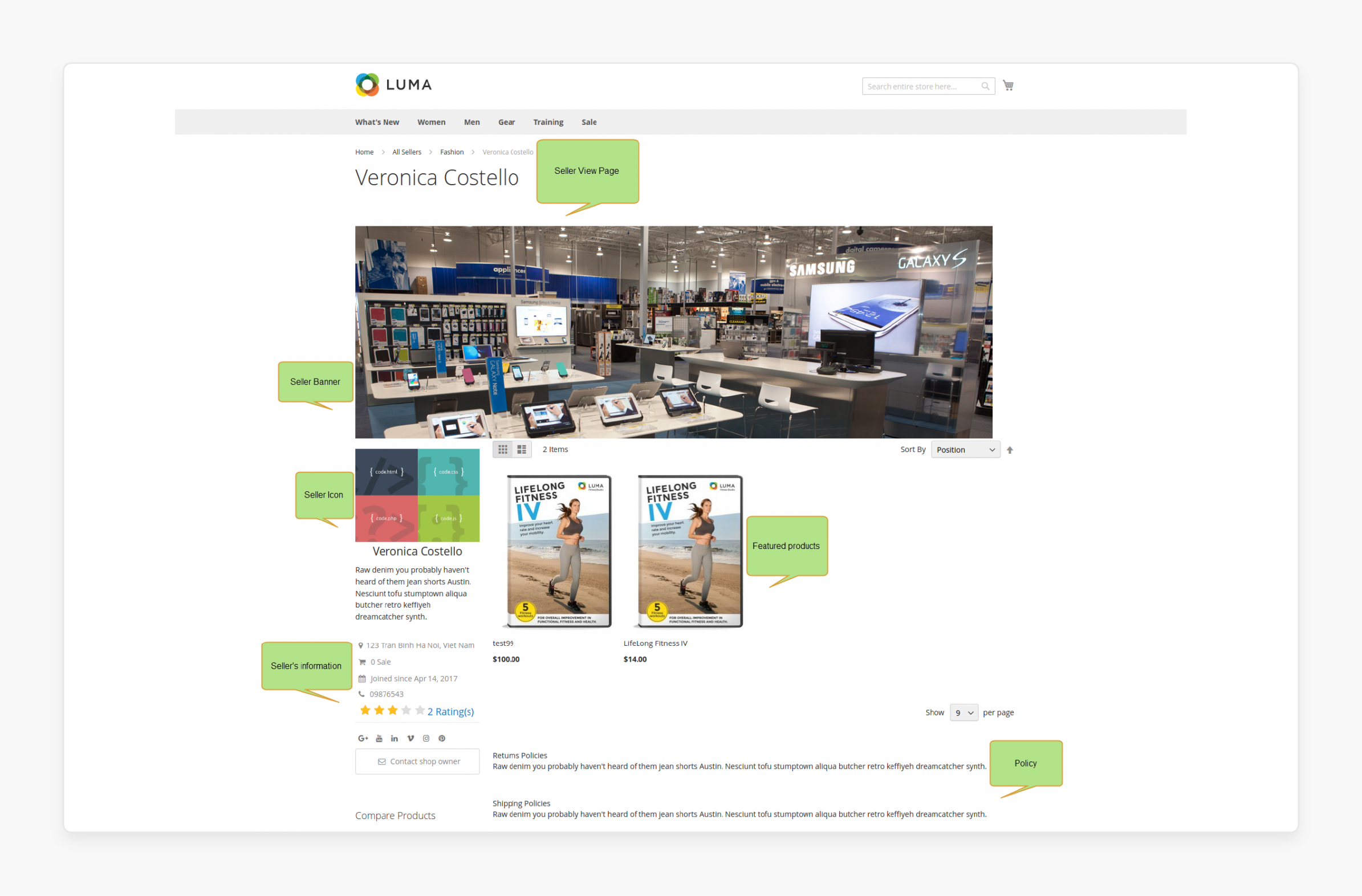
Vendors can customize their storefronts to match their brand identity. They can add logos, banners, and unique product displays. This personalization improves the shopping experience. Custom storefronts allow vendors to differentiate themselves. It helps them attract more customers.
4. Integrate Multiple Payment Gateways
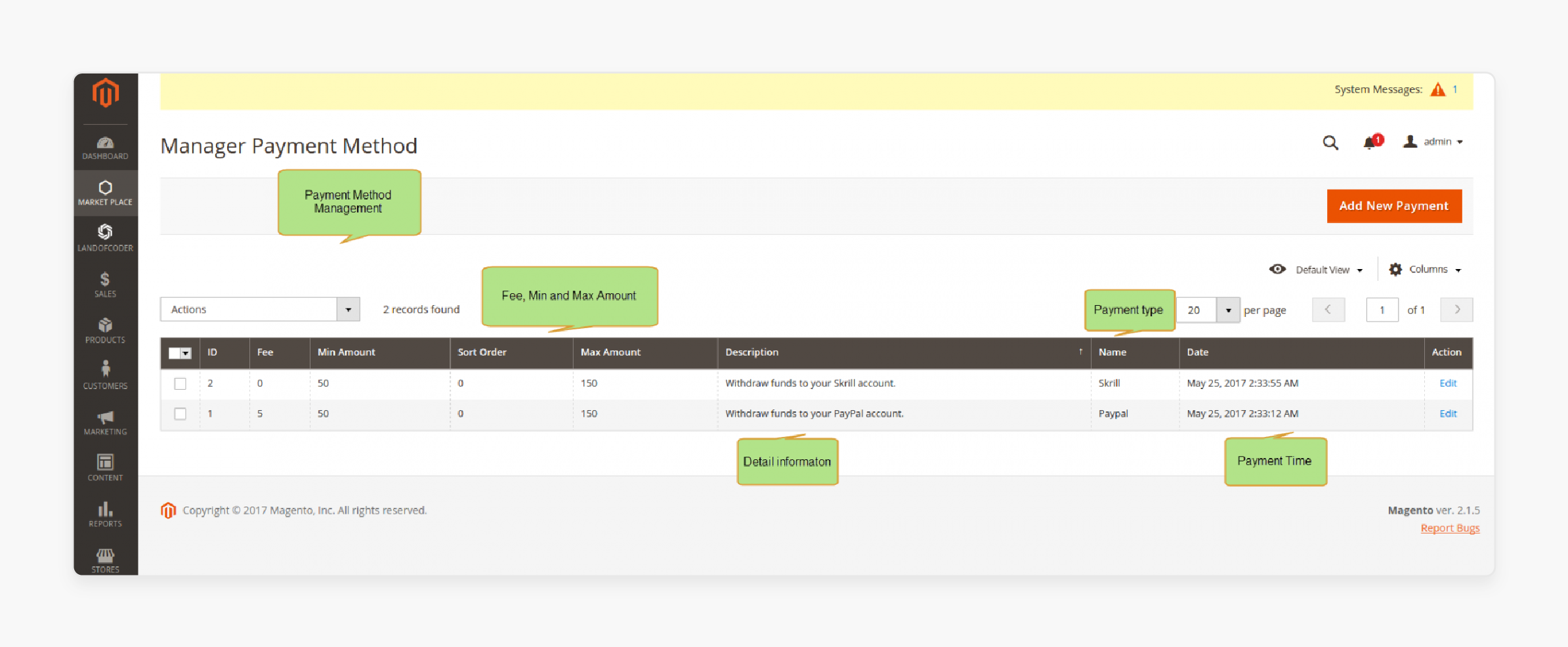
The extension supports multiple payment gateways like PayPal, Stripe, and credit cards. Vendors can choose their preferred payment methods. This flexibility improves the checkout process for customers. Secure transactions build customer trust. It ensures smooth global payments.
5. Boost Sales with SEO-Friendly Tools
The extension includes SEO-friendly tools that help vendors optimize product listings. Vendors can add keywords, meta tags, and SEO-friendly URLs. It improves search engine rankings and boosts visibility. Better rankings lead to more traffic and sales. SEO optimization is essential for vendor success.
6. Manage Commissions Easily
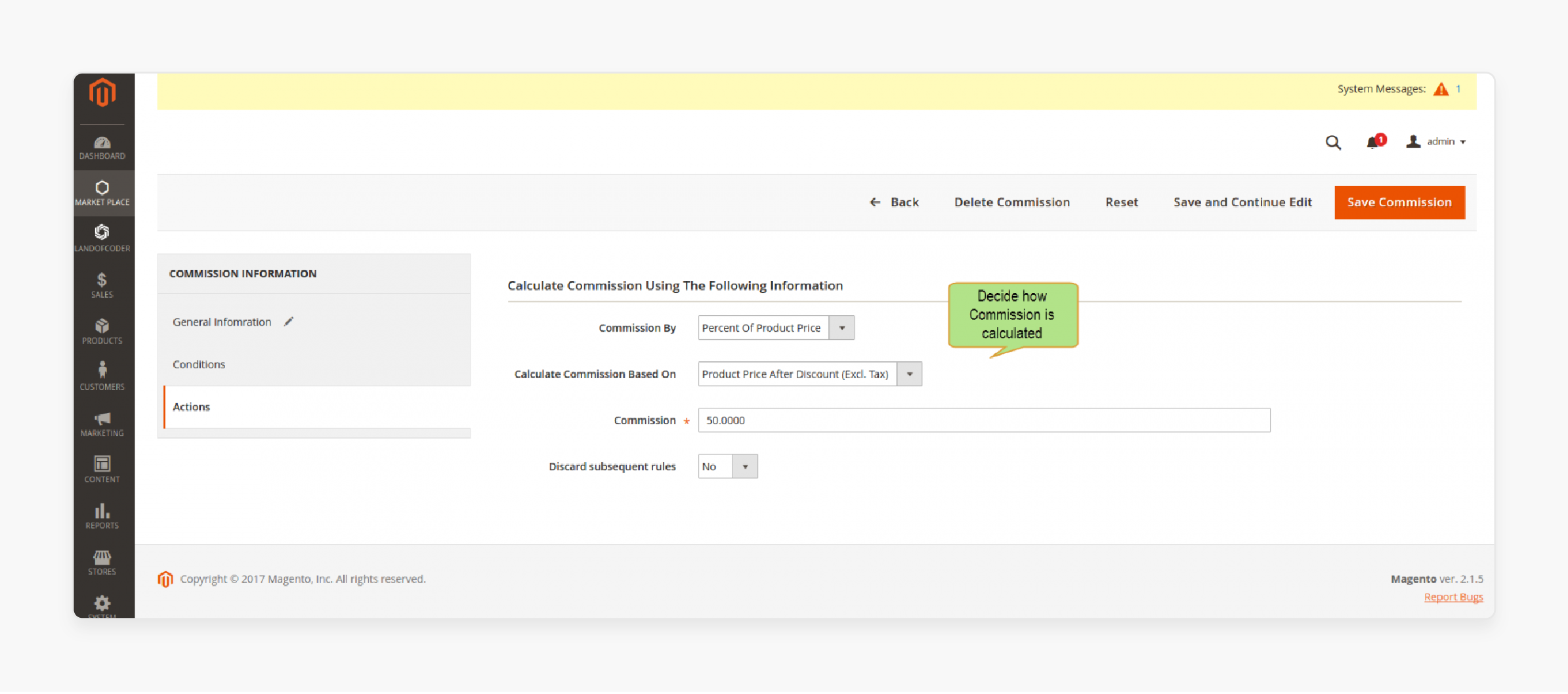
The marketplace owner can manage commissions easily with the extension. You can set fixed or percentage-based commissions for each vendor. The extension automatically calculates commissions on each sale. It simplifies payouts and revenue tracking. Clear commission management helps maintain vendor trust.
7. Provide Detailed Vendor Analytics
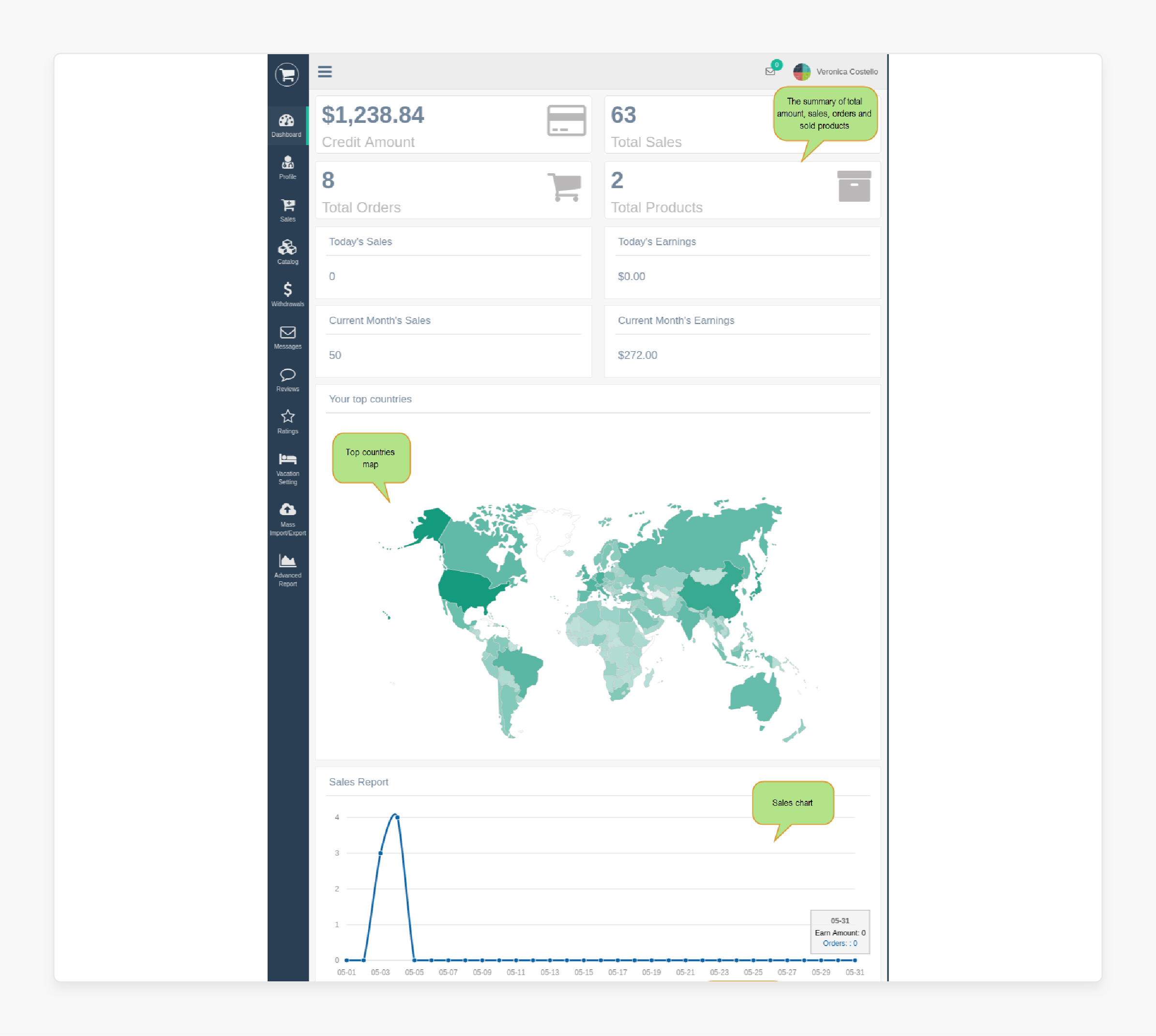
The extension offers detailed analytics for vendors and marketplace owners. Vendors can track sales, customer behavior, and trends. Data insights help vendors improve their marketing strategies. Marketplace owners can monitor vendor performance. Analytics support growth and decision-making.
8. Enhance Customer Experience
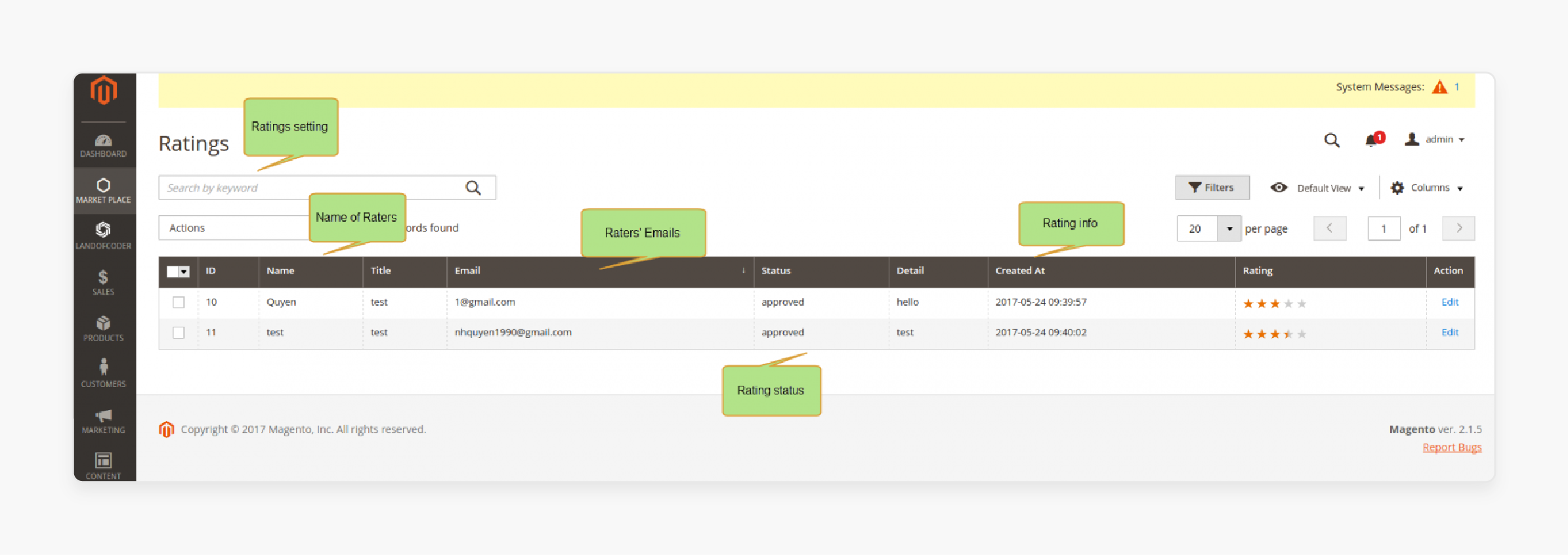
The multi-vendor marketplace improves the customer experience with a wide variety of products. Customers can find competitive prices and different brands in one place. Product reviews and ratings help build trust. Customers enjoy fast shipping and a smooth shopping process. It leads to customer loyalty.
9. Offer Flexible Shipping Options
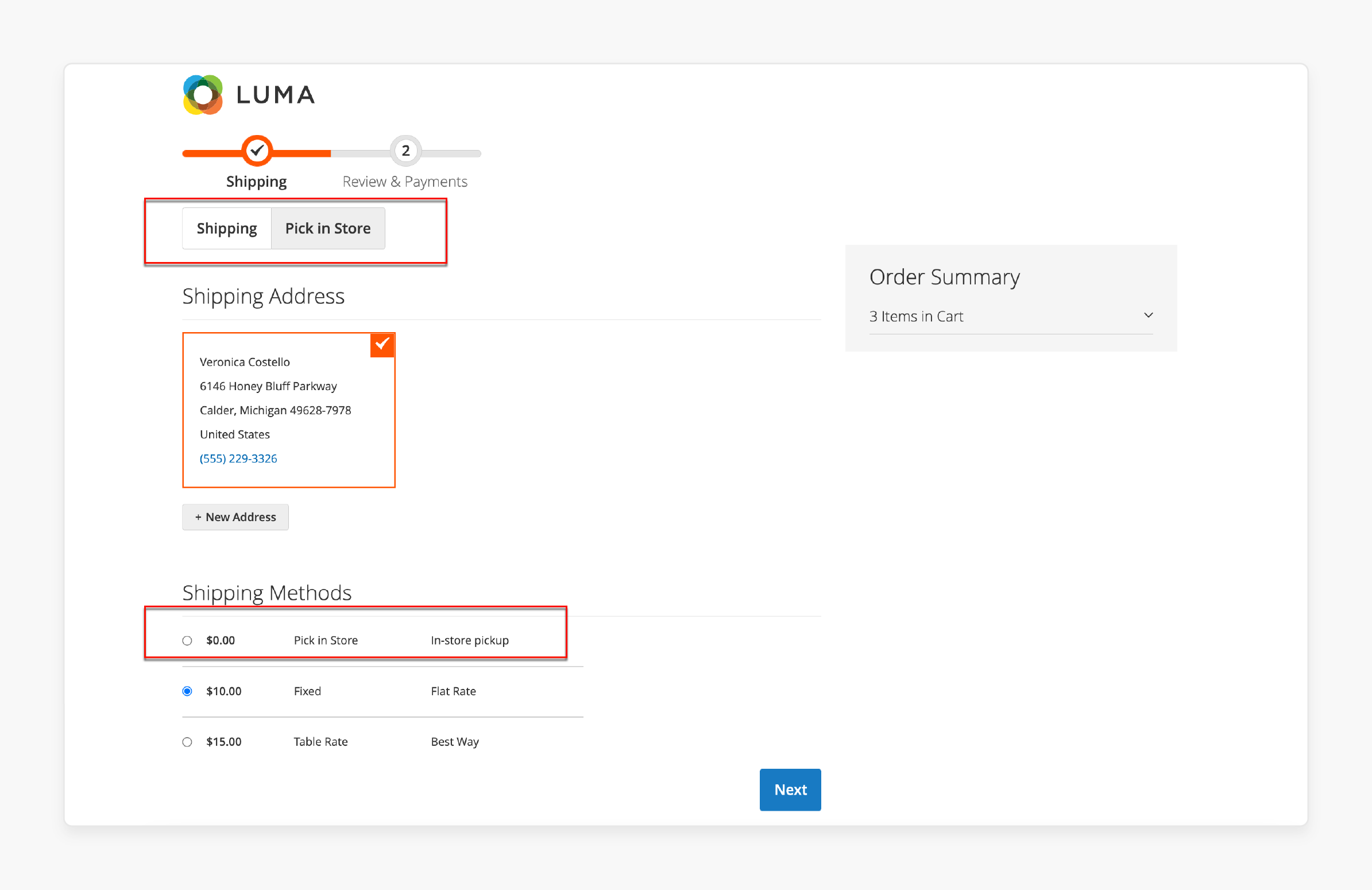
Vendors can choose flexible shipping options that suit their logistics. The extension integrates with shipping providers and offers real-time tracking. Multiple shipping methods give customers more choices. It improves delivery times and reduces shipping costs. Flexible shipping enhances customer satisfaction.
10. Support Multi-Language Functionality
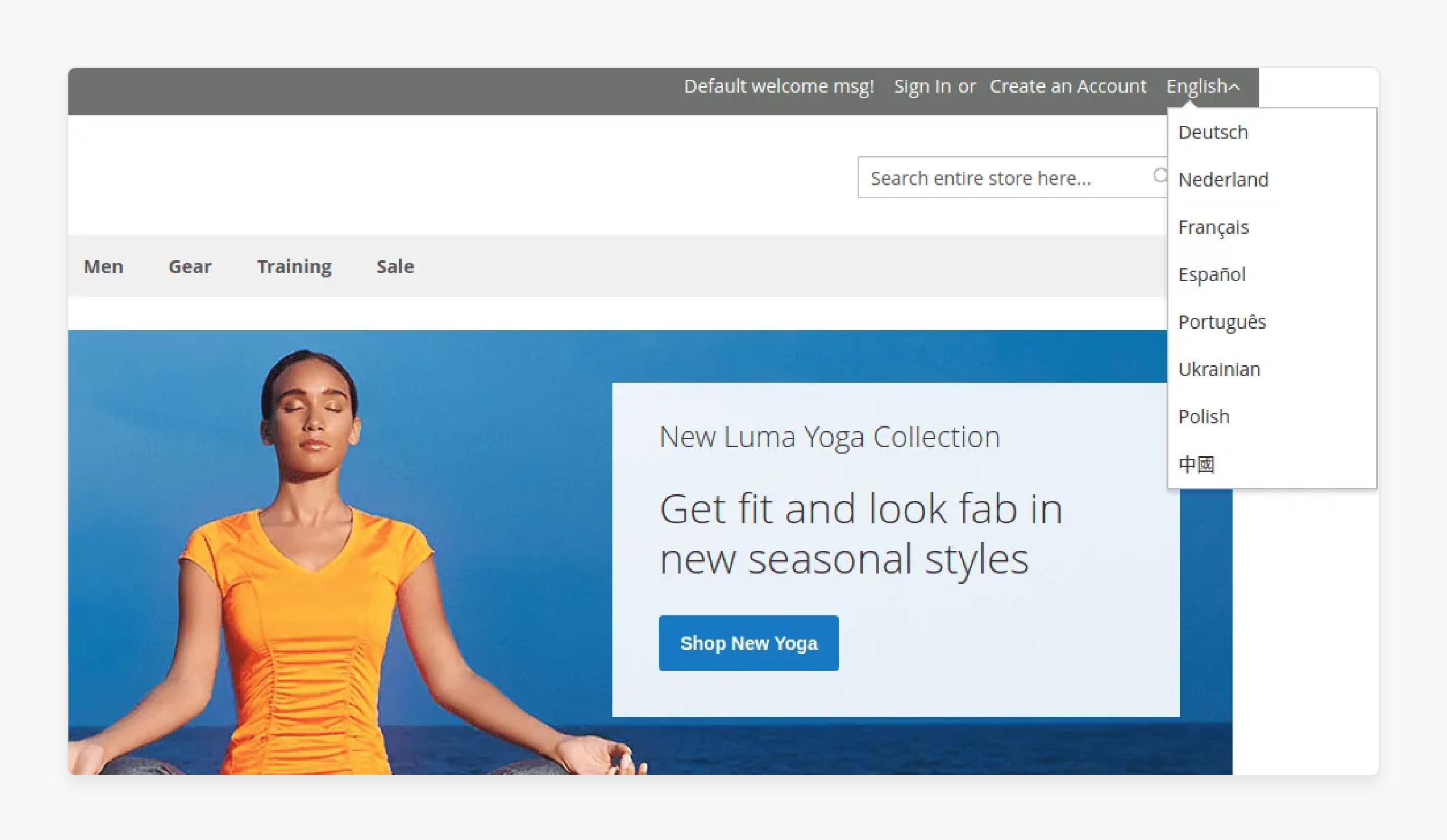
The extension supports multi-language functionality for global audiences. Vendors can translate their product listings and storefronts. It improves accessibility for international customers. Language options increase your marketplace's reach. It ensures customers shop in their preferred language.
Top Magento 2 Multi Vendor Marketplace Extensions
| Extension Name | Benefits |
|---|---|
| CedCommerce Magento 2 Marketplace | Build a multi-vendor e-commerce store like Amazon, eBay, or Etsy. Supports B2B marketplace accounts in Magento 2. Easy to create and modify code. Features fast monetization and supports multiple payment methods. |
| Magento Marketplace Extension by Webkul | Transforms your Magento 2 store into a full multi-seller marketplace. Supports multiple product types like: Downloadable, Virtual, Custom, Simple products. Offers online payment gateways and social integrations. Vendors can customize profiles, banners, and logos. |
| Marketplace Extension by LandOfCoder | Converts your eCommerce store into an active multi-vendor marketplace like Amazon, Etsy, or eBay. Supports international market selling and multiple currencies. Highly compatible with Magento 2 marketplace themes. |
| Magento Marketplace Multi-Vendor by Apptha | Helps create a marketplace that can double your profit. Easily apply multiple filter attributes and performance settings. Offers AJAX-powered quick view and commission settings per vendor based on products sold. |
| Magento Marketplace Extension by Magebay | All-in-one system management through the Magento backend. Suitable for B2B, B2C, and C2C business models. Allows buyers to send messages to sellers for better communication. |
FAQs
1. What is a Marketplace Module in Magento 2?
A Marketplace Module is an add-on that transforms your Magento store into a multi-vendor platform. It allows each online marketplace seller to have their storefront. Sellers can:
-
Add products
-
Manage orders
-
Handle shipments.
The module enhances the store’s functionality. It with dedicated Magento Hosting, enables seamless multi-vendor operations.
2. How does a Marketplace Extension for Magento 2 benefit sellers?
A marketplace extension for Magento 2 allows sellers to manage their products independently. Sellers can add products, handle orders, and update inventories. It provides a separate vendor product space, making it easier to organize. The extension works to streamline seller operations within the marketplace.
3. Can each seller account have a unique storefront?
Yes, each seller account in a Magento marketplace solution can have its storefront. Sellers can add their:
-
Banners
-
Customize their pages.
It helps differentiate seller products and improve brand visibility. The unique marketplace landing page enhances the buyer’s shopping experience.
4. How does the seller review system work in a Magento marketplace?
The seller review system allows customers to rate and review products from online marketplace sellers. Reviews help improve seller product quality and build trust. Each seller account can view and respond to feedback. This feature boosts transparency and enhances the marketplace’s reputation.
5. Can a seller manage their products and orders easily?
Yes, each seller can manage their products, orders, and shipping through their dashboard. The marketplace add-on provides tools for editing listings and tracking inventory. Sellers can add and categorize products independently. It allows them to operate smoothly within the marketplace.
6. How does the extension work for managing multiple vendors?
The marketplace extension works by creating individual seller accounts within your Magento store. Each seller can manage their products, orders, and payments. The marketplace module ensures every separate vendor product is displayed on the storefront. It keeps the marketplace organized and efficient.
Summary
A Magento 2 multivendor marketplace helps businesses expand. It allows multiple vendors to sell through one store. It offers flexibility and tools to manage vendors with ease. Key benefits are:
-
Vendor Management: Manage vendors through easy-to-use dashboards.
-
Commission Setup: Automate commission tracking for smooth payments.
-
Customer Experience: Improve satisfaction with product variety and fast shipping.
-
SEO Optimization: Increase visibility with SEO-friendly tools.
-
Global Reach: Support multiple languages for international growth.
Consider managed Magento hosting to configure multi-vendor marketplace accurately.



